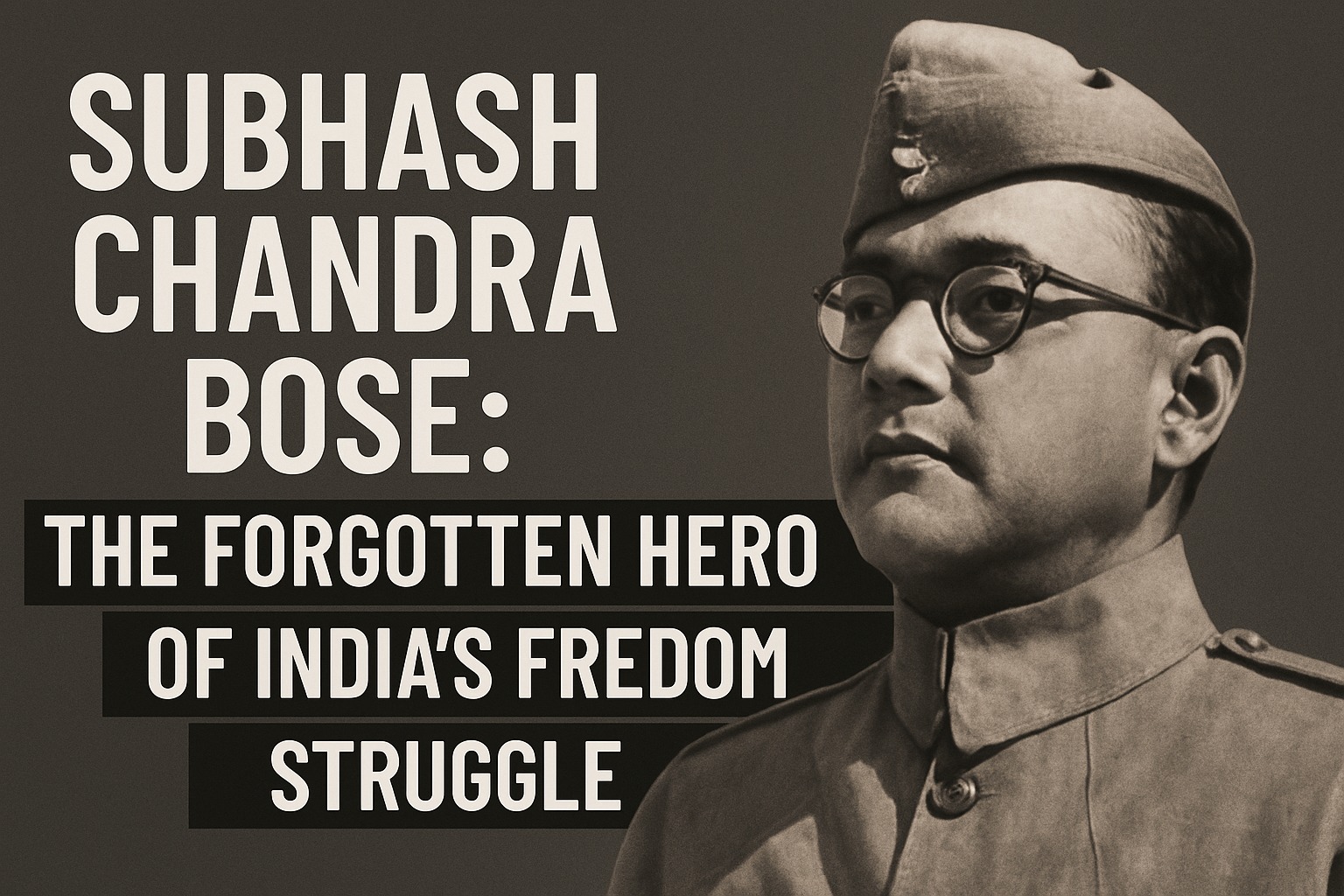Subhash Chandra Bose: The Forgotten Hero of India’s Freedom Struggle
Subhash Chandra Bose, popularly known as Netaji, was one of the most influential and dynamic leaders of the Indian independence movement.

Subhash Chandra Bose, popularly known as Netaji, was one of the most influential and dynamic leaders of the Indian independence movement. A visionary, a fierce patriot, and a charismatic orator, Bose dedicated his life to the cause of India’s freedom and left a mark that history can never erase.
Early Life and Education
Subhash Chandra Bose was born on January 23, 1897, in Cuttack, Odisha, into a well-respected Bengali family. His father, Janakinath Bose, was a lawyer, and his mother, Prabhavati Devi, was a devout woman who instilled strong moral values in her children. Bose was an exceptionally bright student and was deeply influenced by Swami Vivekananda's teachings.
He completed his education in India and then went to England in 1919 to appear for the Indian Civil Services (ICS) examination. He passed with flying colors but chose not to join the British bureaucracy, as his heart was set on fighting for India's freedom.
Entry into Politics
Upon returning to India, Bose joined the Indian National Congress and quickly rose through the ranks due to his intellect and leadership qualities. He was a close associate of Chittaranjan Das and became the Mayor of Calcutta (now Kolkata) in 1930.
Though Bose admired Mahatma Gandhi, he differed with him on methods. While Gandhi believed in non-violence and civil disobedience, Bose believed in armed struggle. This ideological difference led Bose to form the Forward Bloc in 1939 after resigning as the President of the Indian National Congress.
Formation of Indian National Army (INA)
Subhash Chandra Bose’s most iconic contribution was the creation of the Indian National Army (INA) during World War II. He sought help from Germany and Japan to liberate India from British rule. His famous slogan, “Give me blood, and I shall give you freedom!” became a rallying cry for revolutionaries across the country.
The INA, under Bose's command, marched towards India from Burma (now Myanmar) and fought bravely against the British forces. Though the army could not secure a military victory, it awakened patriotic sentiments among Indians and shook the foundations of British colonial rule.
Mystery of His Death
The end of Subhash Chandra Bose’s life remains one of the greatest mysteries in Indian history. Official reports suggest that he died in a plane crash in Taipei on August 18, 1945, but many believe he survived and lived in secrecy. Several commissions have been set up to investigate his death, but the truth remains inconclusive.
Legacy
Subhash Chandra Bose's courage, passion, and undying love for the nation continue to inspire generations. In 2022, the Government of India installed a grand statue of Netaji at India Gate, symbolizing the country's recognition of his immense contribution.
He gave India slogans that still echo in the nation’s soul:
- “Jai Hind”
- “Freedom is not given, it is taken.”
- “It is blood alone that can pay the price of freedom.”
Conclusion
Netaji Subhash Chandra Bose remains a towering figure in India's freedom struggle. Though history may not have always given him the spotlight he deserved, the people of India continue to revere him as a symbol of courage and resistance. His life is a reminder that true patriotism is about selfless dedication, fearless action, and an unshakable belief in the dream of a free nation.